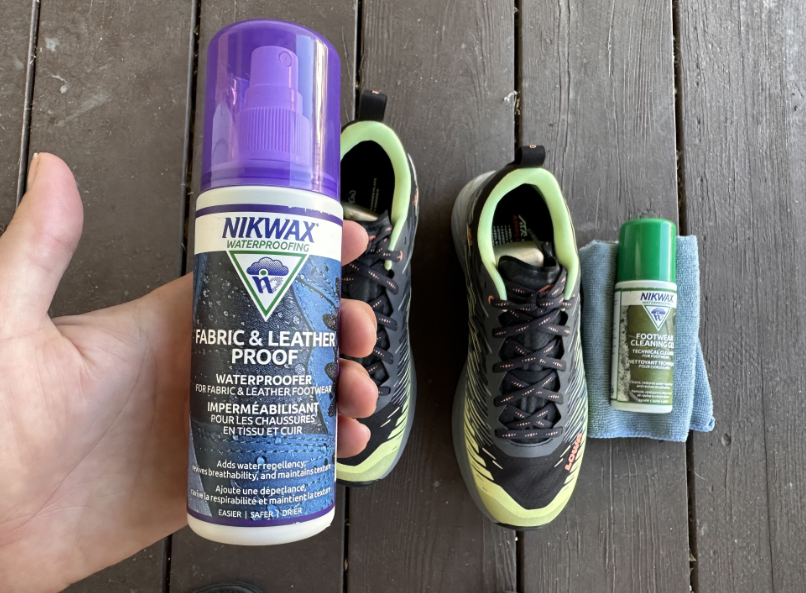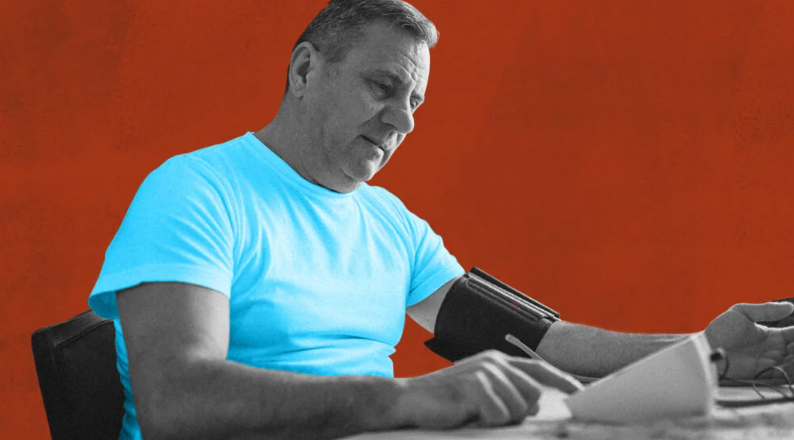Monitoring your blood pressure is crucial for maintaining optimal cardiovascular health. Early detection and management of hypertension, or high blood pressure, can significantly reduce the risk of heart disease, stroke, and other chronic conditions. Relion blood pressure monitors are popular choices for home monitoring due to their affordability, ease of use, and reliable accuracy.
But how to use relion blood pressure monitor? This comprehensive guide delves into the intricacies of using a Relion blood pressure monitor, empowering you to take charge of your health with confidence.
Understanding Your Relion Blood Pressure Monitor
Before diving into the how-tos, let’s familiarize ourselves with the key components of a typical Relion blood pressure monitor:
- Cuff: This inflatable band wraps around your upper arm and houses the sensor that detects blood pressure fluctuations.
- Air tube: This tube connects the cuff to the monitor and transmits pressure readings.
- Display: This screen displays your systolic and diastolic blood pressure readings, pulse rate, and other relevant information.
- Control buttons: These buttons allow you to set the date and time, select users, initiate measurements, and navigate through the monitor’s features.
Preparing for an Accurate Reading
To ensure accurate blood pressure readings, it’s crucial to follow proper preparation steps:

- Find a quiet, comfortable space. Avoid taking measurements in noisy or stressful environments.
- Sit comfortably with your back straight and supported. Rest your feet flat on the floor and avoid crossing your legs.
- Relax your arm and avoid clenching your fist. Place your bare arm on a flat surface at heart level.
- Remove any tight clothing from your upper arm.
How to Use Relion Blood Pressure Monitor?
Now that you’re prepped, let’s walk through the measurement process:
- Attach the cuff securely. Wrap the cuff snugly around your upper arm, ensuring the artery symbol aligns with the pulse point on your inner arm. The bottom edge of the cuff should be about 1 inch above your elbow crease.
- Connect the air tube. Plug the air tube securely into the designated port on the monitor.
- Select your user (if applicable). Some models allow storing readings for multiple users.
- Press the start button. The cuff will automatically inflate, and the monitor will display your blood pressure and pulse rate as the pressure gradually releases.
- Remain still and silent. Avoid talking, moving, or tensing your muscles during the measurement.
- Record your readings. Note down the systolic and diastolic pressure values, pulse rate, and date/time in a logbook or blood pressure tracking app.
READ: Is Celtic Salt Good for High Blood Pressure?
Troubleshooting Common Issues
If you encounter any difficulties while using your Relion blood pressure monitor, don’t fret! Here are some common issues and their solutions:
- Inaccurate readings: Ensure proper cuff placement, relax your arm completely, and avoid taking measurements after eating, smoking, or exercising. If the issue persists, consult your healthcare provider.
- Cuff too loose/tight: Adjust the cuff snugly around your arm without restricting blood flow.
- Leaking air: Check for air leaks around the cuff or air tube connections. Tighten any loose connections or replace damaged components.
- Error messages: Refer to the user manual for troubleshooting specific error codes displayed by your monitor.
Advanced Features of Relion Blood Pressure Monitors
Depending on your model, some Relion monitors offer additional features to enhance your blood pressure monitoring experience:
- Irregular heartbeat detection: This feature alerts you to the presence of irregular heart rhythms, potentially indicating a need for further medical evaluation.
- Memory storage: Track your readings over time and identify trends in your blood pressure. Some models offer separate storage for multiple users.
- Bluetooth connectivity: Sync your readings with a smartphone app for convenient data tracking, analysis, and sharing with your healthcare provider.
READ: Can I Take Golo with High Blood Pressure?
Maintaining Your Relion Blood Pressure Monitor
Proper care and maintenance ensure optimal performance and longevity of your Relion blood pressure monitor:
- Store the monitor in a cool, dry place. Avoid exposing it to extreme temperatures or direct sunlight.
- Clean the cuff regularly. Wipe the cuff with a damp cloth and mild soap solution. Allow it to air dry completely before use.
- Replace the batteries when necessary. A low battery indicator will appear on the display when battery replacement is needed.

Interpreting Your Blood Pressure Readings
Understanding what your blood pressure readings mean is crucial for interpreting your cardiovascular health. The American Heart Association (AHA) classifies blood pressure readings as follows:
- Normal: Systolic < 120 mmHg and Diastolic < 80 mmHg
- Elevated: Systolic 120-129 mmHg and Diastolic < 80 mmHg
- Stage 1 Hypertension: Systolic 130-139 mmHg or Diastolic 80-89 mmHg
- Stage 2 Hypertension: Systolic 140-159 mmHg or Diastolic 90-99 mmHg
- Hypertensive Crisis: Systolic > 180 mmHg or Diastolic > 110 mmHg
It’s important to note that these are general guidelines, and individual factors like age, medical history, and underlying health conditions can influence the interpretation of your readings. Always consult your doctor for a personalized evaluation of your blood pressure and appropriate management strategies.
READ: Can Sinus and Ear Infections Cause High Blood Pressure?
Monitoring Trends and Sharing with Your Doctor
Taking regular blood pressure measurements at home provides valuable insights into your overall cardiovascular health. Tracking your readings over time allows you to identify trends and assess the effectiveness of any lifestyle changes or treatment plans implemented by your doctor. Here are some helpful tips for effective blood pressure monitoring:
- Take your readings at the same time each day. Consistency is key for identifying patterns and trends.
- Record your readings accurately. Note down the date, time, systolic and diastolic pressure values, pulse rate, and any additional factors that might influence the readings, such as caffeine intake or exercise.
- Share your readings with your doctor regularly. Scheduled appointments and discussions with your healthcare provider allow for adjustments to medication or lifestyle recommendations based on your case.
Lifestyle Modifications for Optimal Blood Pressure Control
Beyond home monitoring, adopting healthy lifestyle habits plays a crucial role in managing blood pressure and reducing your risk of cardiovascular complications. Here are some key strategies to incorporate into your daily routine:
- Maintain a healthy weight: Excess weight puts additional strain on your heart and blood vessels, contributing to high blood pressure. Aim for a healthy weight range through a balanced diet and regular physical activity.
- Embrace a heart-healthy diet: Limit saturated and trans fats, sodium, and processed foods. Prioritize fruits, vegetables, whole grains, lean protein, and healthy fats like those found in olive oil and avocados.
- Move your body regularly: Aim for at least 150 minutes of moderate-intensity exercise or 75 minutes of vigorous-intensity exercise per week. Regular physical activity strengthens your heart, improves circulation, and helps manage weight.
- Reduce stress: Chronic stress can elevate blood pressure. Practice relaxation techniques like yoga, meditation, or deep breathing exercises to manage stress levels effectively.
- Limit alcohol and tobacco: Excessive alcohol consumption and smoking significantly increase your risk of high blood pressure and other cardiovascular diseases. Consider quitting smoking and moderation when it comes to alcohol intake.

Remember, managing blood pressure is a collaborative effort between you and your healthcare provider. By utilizing home monitoring tools like your Relion blood pressure monitor, adopting healthy lifestyle habits, and working closely with your doctor, you can effectively take control of your cardiovascular health and pave the way for a healthier, happier life.
READ: Does Cocaine Increase Blood Pressure?
Conclusion
In conclusion, utilizing your Relion blood pressure monitor effectively can be a powerful tool in managing your cardiovascular health and taking control of your well-being.
By following the proper measurement techniques, interpreting your readings accurately, and adopting healthy lifestyle habits, you can gain valuable insights into your blood pressure trends and work collaboratively with your healthcare provider to implement effective management strategies.
Remember, consistency is key to success. Regularly monitoring your blood pressure, making positive lifestyle changes, and maintaining open communication with your doctor are the cornerstones of a proactive approach to optimal cardiovascular health. By empowering yourself with knowledge and taking informed action, you can pave the way for a healthier, happier life.
Resources and References
- American Heart Association: https://www.heart.org/
- American College of Cardiology: https://www.acc.org/Login
- National Heart, Lung, and Blood Institute: https://www.nhlbi.nih.gov/health
- Centers for Disease Control and Prevention: https://www.cdc.gov/heartdisease/index.htm
- Mayo Clinic: https://www.mayoclinic.org/
RECOMMENDED ARTICLES:
Can You Take Muscle Relaxers with Blood Pressure Medication?
Does Eating Ice Lower Blood Pressure?
Does Prozac Raise Blood Pressure?
FAQs – Relion Blood Pressure Monitor
How often should I take my blood pressure?
The frequency of your readings depends on your situation and your doctor’s recommendations. Generally, if you have normal blood pressure, checking once or twice a month might be sufficient. However, if you have elevated blood pressure or are diagnosed with hypertension, daily or even twice-daily monitoring might be necessary. Consult your doctor for personalized advice based on your health status.
What can affect the accuracy of my readings?
Several factors can influence the accuracy of your blood pressure readings:
- Improper cuff placement: Ensure the cuff is snugly wrapped around your upper arm at heart level with the artery symbol aligned with your pulse point. Loose or misaligned cuffs can lead to inaccurate readings.
- Movement or talking: Avoid talking or moving during the measurement process. Even slight movements can affect the results.
- External factors: Avoid taking measurements after smoking, eating, or exercising, as these activities can temporarily elevate your blood pressure. Wait at least 30 minutes after engaging in such activities before taking your readings.
- Medications: Certain medications can affect blood pressure. If you’re on any medication, consult your doctor about potential interactions with your blood pressure monitor readings.
What do the different readings on my monitor mean?
Your Relion blood pressure monitor will display several values:
- Systolic pressure: This is the pressure in your arteries when your heart beats.
- Diastolic pressure: This is the pressure in your arteries when your heart rests between beats.
- Pulse rate: This is the number of times your heart beats per minute.
- Date and time: Most models store readings with timestamps for tracking purposes.
Refer to the American Heart Association guidelines for interpreting your blood pressure readings based on your age and health status. Remember, consistently high readings above normal suggest the need for consulting your doctor for further evaluation and potential management strategies.
How do I troubleshoot common issues with my monitor?
If you encounter any difficulties with your Relion blood pressure monitor, like inaccurate readings, leaking air, or error messages, consult the user manual for specific troubleshooting steps. It’s always recommended to refer to the official troubleshooting guide before attempting any repairs or adjustments yourself.
Can I share my blood pressure readings with my doctor?
Absolutely! Sharing your blood pressure readings with your doctor is crucial for monitoring your cardiovascular health and making informed decisions regarding your treatment plan. Most Relion models allow exporting readings to a smartphone app or transferring data to a computer, making it easy to share them with your healthcare provider during appointments.


